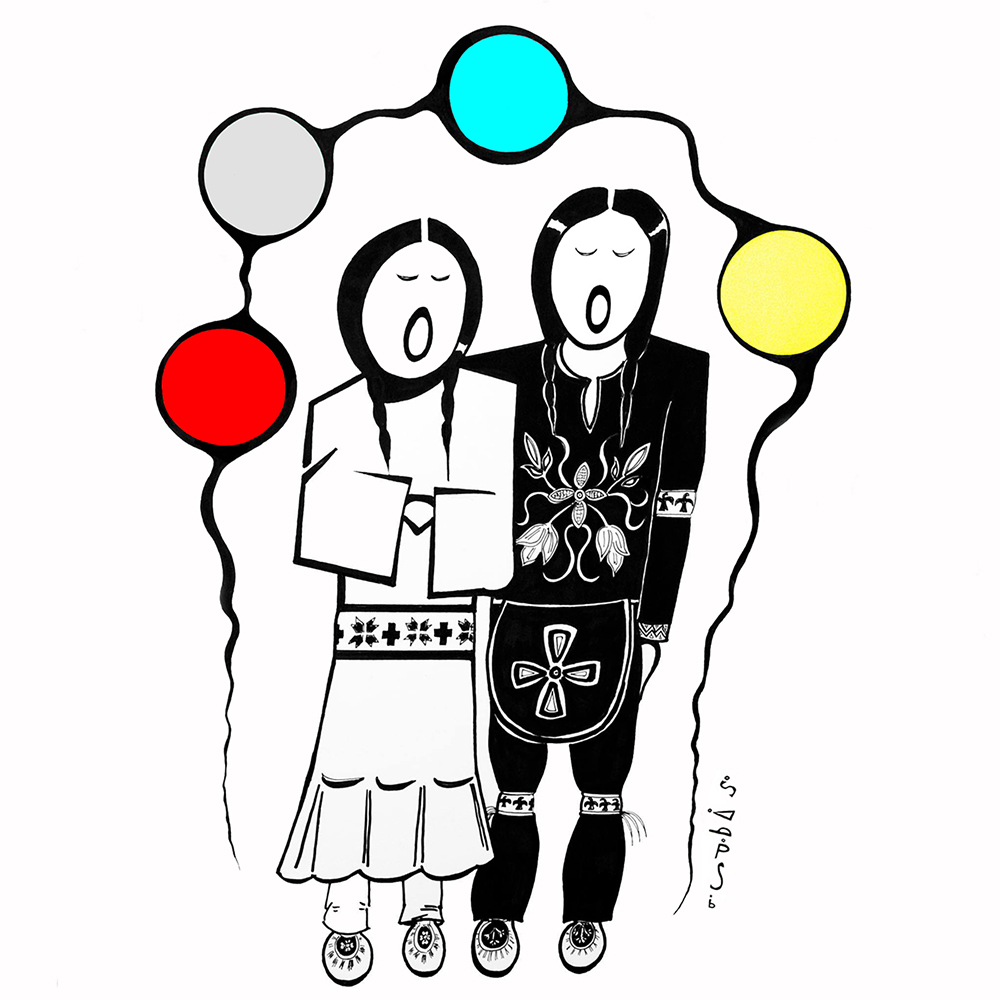Zhawenindiwag ("They Love Each Other")

Native Woodland artist Zhaawano Giizhik presents to you with a grateful heart the above digitized 23,622 x 23,622 inch (60 x 60 cm) pen and ink wall print, titled "Zhawenindiwag." It is part of a large collection of art prints, conceived in an ancient and most sacred Indigenous tradition of Anishinaabeg and Ininewak (Cree) storytellers.
Zhaawano's elegant line art tells his People's aadizookaanan, their legends and sacred stories — stories that were used as a teaching tool long before there were schools. The stories and narratives that are being shared through his prints are as strongly allegorical as in the old tradition of storytelling, yet they also contain lessons that reflect today’s world. Stylized in the powerful painting discipline of the Woodland School of Art, and carefully wrapped in ancient metaphors and age-old symbolism, each one of Zhaawano's art prints is a teaching mirror, instilling in the minds of those who make the effort to look in it a living sense of the unique worldview, dreams, and visions of the original inhabitants of the northern land of woods and lakes of Turtle Island.
The artist depicted this Ojibwe wedding couple in celebration of the traditions of his People with regard to love and partnership.
The drawing reflects the sacredness of wiidigendiwin, or Partnership: "zhaawenindiwag" is an Ojibwe word and it means: they bless, pity each other; they have mercy, compassion for each other; they show loving-kindness, unconditional love for each other.
Surrounding the wedding couple are four orb-like symbols connected by a free-flowing spirit line. These designs, sometimes called spirit suns, or balls, or seeds, are symbolic of the – oftentimes invisible – spirit power that seems to be dancing through the atmosphere, surrounding all living entities in nature. They are age-old symbols of the most sacred art, now blessing the couple in the middle. The spirit suns the artist filled with the colors of the Four Directions: yellow for the East, blue for the South, red for the West, and gray for the North.

